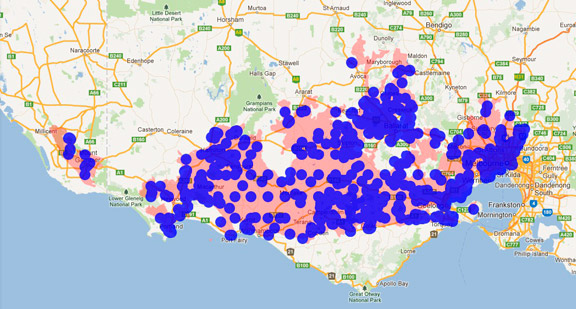A range of teacher professional learning programs will be developed to accompany the Biodiversity of the Western Volcanic Plains online outreach...

Black Swan
Cygnus atratus
Forms isolated pairs for life. Both adults raise one brood per season. Breeds anytime of the year with ample rainfall. Breeding season is usually early-mid winter in southern Australia. Forms untidy nests of reeds and grasses on small islands or floating in deep water. Clutch size is usually 5 or 6 eggs but can lay up to 10 eggs. Incubation time is 35-45 days.
| Details | Description |
| Type | Bird |
| Group | Swan |
| Identifying Characteristics | |
| Distinctive Markings | Distinct narrow, white band towards the end of the bill. Curled feather tips gives this species its characteristic ruffles. |
| Diet | Herbivore including algae and weeds. |
| Habitat | Diverse range of habitats including lakes, estuaries, rivers and temporary wetlands of arid inland areas. |
| Native Status | Native to Australia |
| Sounds | Loud, clear bugling call. Defensive hiss. |
| Taxonomy | |
| Phylum | Chordata |
| Class | Aves |
| Order | Anseriformes |
| Family | Anatidae |
| Genus | Cygnus |
| Species | atratus |

Distribution maps indicate current and historic locations where species have been sighted.
Source: Atlas of Living Australia
| Conservation Status | |
| DEPI Advisory List | Not listed |
| FFG Act | Not listed |
| EPBC Act | Not listed |
The conservation status of species is listed within Victoria and Australia.
The Department of Environment and Primary Industry (DEPI) Advisory List consists of non-statutory advisory lists of rare or threatened flora and fauna within Victoria.
The Flora and Fauna Guarantee Act 1988 (FFG Act) lists threatened species in Victoria. Under the Act, an Action Statement is produced for each listed species.
The Environment Protection and Biodiversity Conservation Act 1999 (EPBC Act) is the Australian Government’s key piece of environmental legislation, listing nationally threatened native species and ecological communities.



